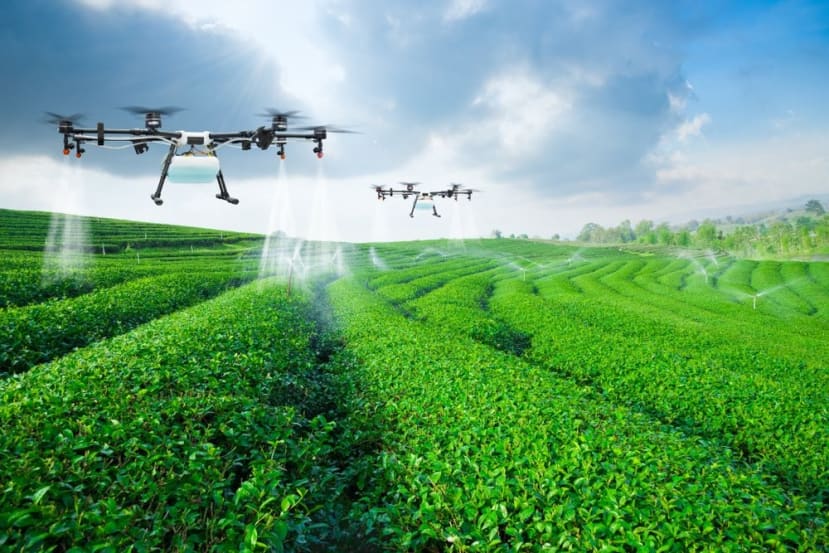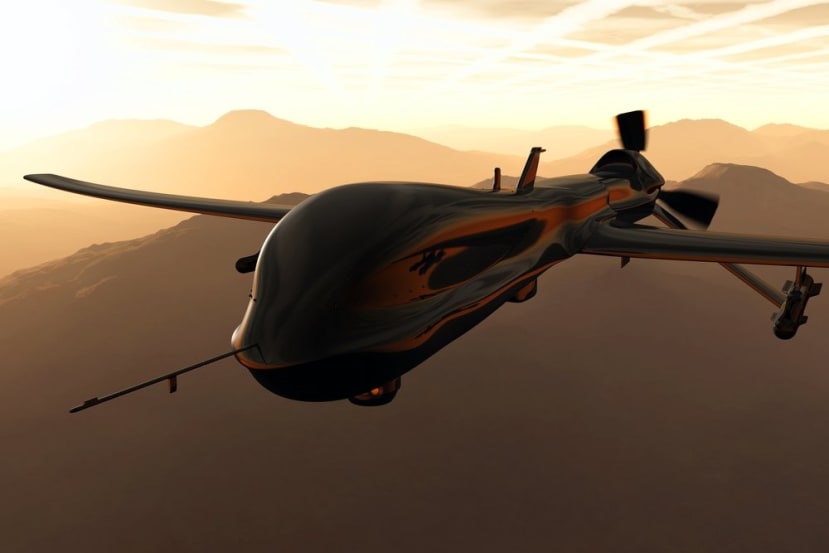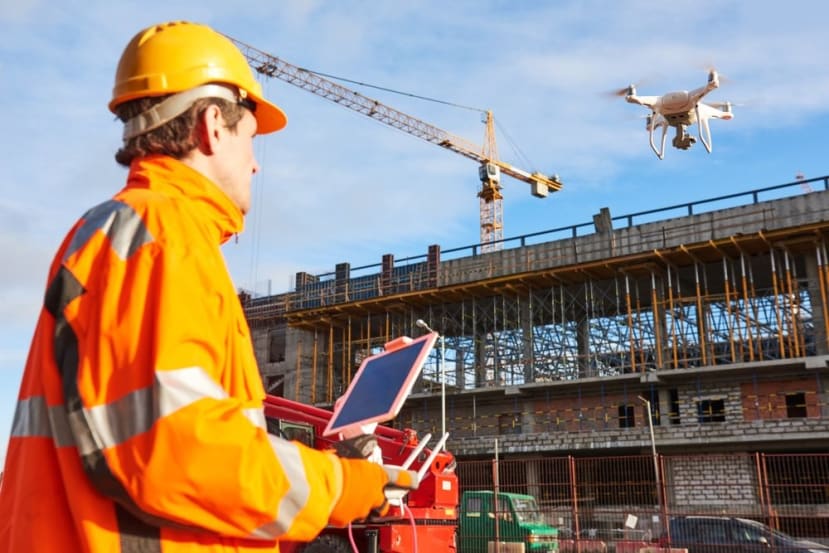The Rise & Possible Stall of the Drone Empire
Follow articleHow do you feel about this article? Help us to provide better content for you.
Thank you! Your feedback has been received.
There was a problem submitting your feedback, please try again later.
What do you think of this article?
Drones, you can find them in stores, both online and offline just about everywhere these days, big ones, small ones, some with cameras, some without. There seems to be an inexhaustible source and a keen appetite for them on the domestic scene, either for playing around within your home, to shooting sweeping epic and badly edited (judging by YouTube) views of just about everything. Drones, of course, can serve many other purposes, such as monitoring thousands of acres of crops, de-icing power lines or inspecting a building for flaws. It’s fundamentally apparent that drones have a disruptive potential that’s gathering pace. Your groceries and perhaps medicines could be delivered by a drone while the security services observe the masses from afar, the list is growing daily and the possibilities seem endless.
One thing seems apparent, the skies have the potential to be filled with these busy unmanned drones, either via a business venture, pleasure or for military and security means.
Aerial drones are not as new an invention as you may think...
The Early Drones
As early as 1849 drones of a fashion were used by the Austrian armed forces during a siege against the city of Venice when the Venetians decided to revolt against Austrian rule. A series of balloons were packed with explosive along with a rudimentary timing device and sent off on a bombing mission towards Venice. The only thing is, the direction of the prevailing wind isn’t always an exact science and most never reached their intended target and many floated above the Austrians own lines and detonated. The Venetians thought it was a wonderful display of fireworks for the most part. Nearly a hundred years later during WW2, the Japanese sent around 10000 bombs filled balloons towards the US coast, the intention to cause wildfires and associated panic, neither happened apart from the unfortunate deaths of a young family of six who found one of the balloons which detonated as they examined it out of curiosity.
Nikola Tesla, in 1898, unveiled the world’s first radio controlled vehicle, controlled by decoding Hertzian waves, which he called ‘Tele-automation’. The Royal Air Force during WW2 developed an unmanned radio-controlled plane that was used for Anti-Aircraft training purposes, coined ‘The Queen Bee’, hundreds of these were made and used successfully and one can still be seen in the De Havilland Museum. We have seen them in the movies and on the TV screen, fast forward to the 1990s and the Predator Drone, remotely piloted from the other side of the world has altered the way wars are fought permanently, providing intel and weapon delivery in a far more accurate manner than the carpet bombing tactics of WW2. One thing appears to be certain, drones are here to stay, in many aspects of our current lives and doubtless, in ways we haven’t even imagined yet.
The Home Made Drone and Beyond
Back in the late 2000’s a dedicated bunch of remote-controlled aircraft enthusiasts figured out that their mobile phones contained all the essential components they would need to create a rudimentary autopilot system. They used the accelerometers, gyroscopes, the GPS and processors and other gizmos to control their creation and utilised their phone to control the drone itself. Drones continued to have a certain mystique around then, costing thousands of pounds and reserved for the likes of filming dramatic sweeping movie scenes and the like. In 2010 a company called Parrot appeared at the CES showcasing their AR Drone Quadcopter to a wowed audience. Controlled by an iPhone it had fore and aft cameras and could capture brilliant footage whilst bobbing and weaving around, and importantly it was very easy to fly. The Parrot AR Drone could keep itself steady and airborne, all you had to do was steer which was a huge breakthrough for drone tech. Following swiftly on the heels of Parrot came a company called DJI, who created a brilliant little drone called the Phantom. This particular drone could perform stunts and tricks as well as shoot video, and if you made a mess of things it would automatically return to you, this design put DJI firmly on the drone map and who have grown considerably to now owning around 70% of the market.
Drones continue to get better, with more features, better cameras and some with the ability to carry small packages, and of course at the other end of the cost spectrum the tiny drones that you play within your home. Drones can now avoid obstacles, stay steady in strong winds, work underwater and then fly up into the sky and fly higher and further than ever before. The drone market is certainly pretty big, but not as huge as the smartphone market, it’s destined to grow even further with a large percentage being the hobbyist but with the greater number being business and military owners.
Laws of the Sky
With all these drones potentially filling the skies and possibly falling out of it, it’s only a matter of time before someone is injured or perhaps killed by a falling drone so it stands to reason that the various aviation authorities around the globe need to organise some level of control. In the UK for example, you cannot fly a drone more than 400ft high and that applies to drones weighing between 250g and 7kg. There is also a 1km drone exclusion zone around all airport boundaries in the UK, which is most likely going to be expanded in the coming years so it seems. Recent laws also stipulate that if your drone weighs more than 250g (which comes into effect in November 2019) you will need to register with the Civil Aviation Authority and pass online safety tests, resulting in a hefty fine should you be caught doing otherwise. The UK government is also working on a Drones Bill, but it’s a case of waiting to see what that Bill contains at the moment. With all these upcoming laws and regulations it appears that it won’t be the company’s manufacturing the drones that will call the shots, but instead the laws designed to govern their use.
Companies such as Amazon have famously tested delivery by drone, their service known as ‘Prime Air’ is still in development at the moment as they seek to meet the various regulations and build a support and service network for the drones. I personally can’t help but imagine Amazon drones being shot from the sky for their payload by avid teenagers with a .22 air rifle somewhere at some point, hunting down the latest generation of iPhone perhaps?
A company called Zipline created a service that delivers drugs and medical supplies such as blood to remote regions in Rwanda. The Zipline drone has made over 4000 flights in the few years it has been running and has recently begun operating in Tanzania as well. Part of the ease of the creation of these facility has a lot to do with the lack of local laws pertaining to the use of drones in these countries and the remoteness in which they are utilised.
Tomorrow's Drones
The brains behind the drone industry are keenly thinking of new types and applications for their drones, one such idea is the use of drones in swarms. With the decline of Bee populations in certain parts of the world could swarms of tiny drone be utilised to pollinate trees and plants? Could a swarm of drones work as one to carry out inspection work, or carry heavier cargo whilst working as one unit. It’s certainly a way around the up and coming UK law, for if you have 3000 drones weighing 249g performing a task in unison, well, by all accounts you don’t need to tell anyone about it.
For a modern example, after the devastation of Hurricane Harvey, fleets of drones were employed to assess the impact of the damage caused, surveying buildings and power supply systems to ensure it was safe for people to return.
In the coming years, it’s not too far from the imagination to think that drones could also make repairs to damaged buildings, bridges or power supply structures that have been damaged via a natural disaster or other calamities. Perhaps drones could be used in rescue situations, at sea or maybe high on a mountaintop, reducing the risks of the rescue teams themselves. There is certainly a wide and varied range of applications for drone use, the only limit it appears is one’s imagination, and the local government rules of the day.
The Tumble of the Drones
Everything that goes up must come down, as the saying goes, and the same must be said for drones, failing batteries and terminal mechanical failures aside, with the rise of the drones, comes the rise of those device designed to bring them down. Not everyone fancies the idea of a drone with a 4K camera staring through their window, or even flying through their window for a closer peek at the occupants and their contents, for those people (and obviously the more secure areas such as Prisons), there exists drone countermeasures. You can find drones that are designed to hunt down and capture other drones, some people have even recruited birds of prey to attack unwanted aerial intruders. Shotguns loaded with shells that contain weighted nets to disable and down a pesky drone and frequency jammers are another method of drone control, along with someone armed with a .22 air rifle!
People are genuinely worried about drones, not only about the possibility of one tumbling from the sky to impale itself in someone’s head but also from privacy and security perspectives, as technology improves so does the abilities of those drones. A 4K camera today is tomorrow capable of shooting at night with infrared vision and with the right software it could recognise your face from thousands of feet away. The implication of an even more observant state is certainly a possibility and drones with the correct hardware and software can offer all manner of surveillance abilities to the user. Another consideration is the use of drones for terrorist activities, ISIS is said to be developing bomb carrying drones which is certainly a cause for concern for many. A recent terrorist attack reportedly using drones was aimed at the Venezuelan President which only serves as a stark reminder of the darker abilities of drones when in the wrong hands.
Whatever the outcome of the rules and regulations that will eventually govern the use of drones, and whatever the designers of tomorrow come up with you can still fly a drone bigger than 250g without registering with anyone in the UK until November 2019. And, if you are still interested in owning and flying a decent sized drone without hindrance then you better make the most of it while you still can it seems, at least in the UK, or you could move to Rwanda maybe?







